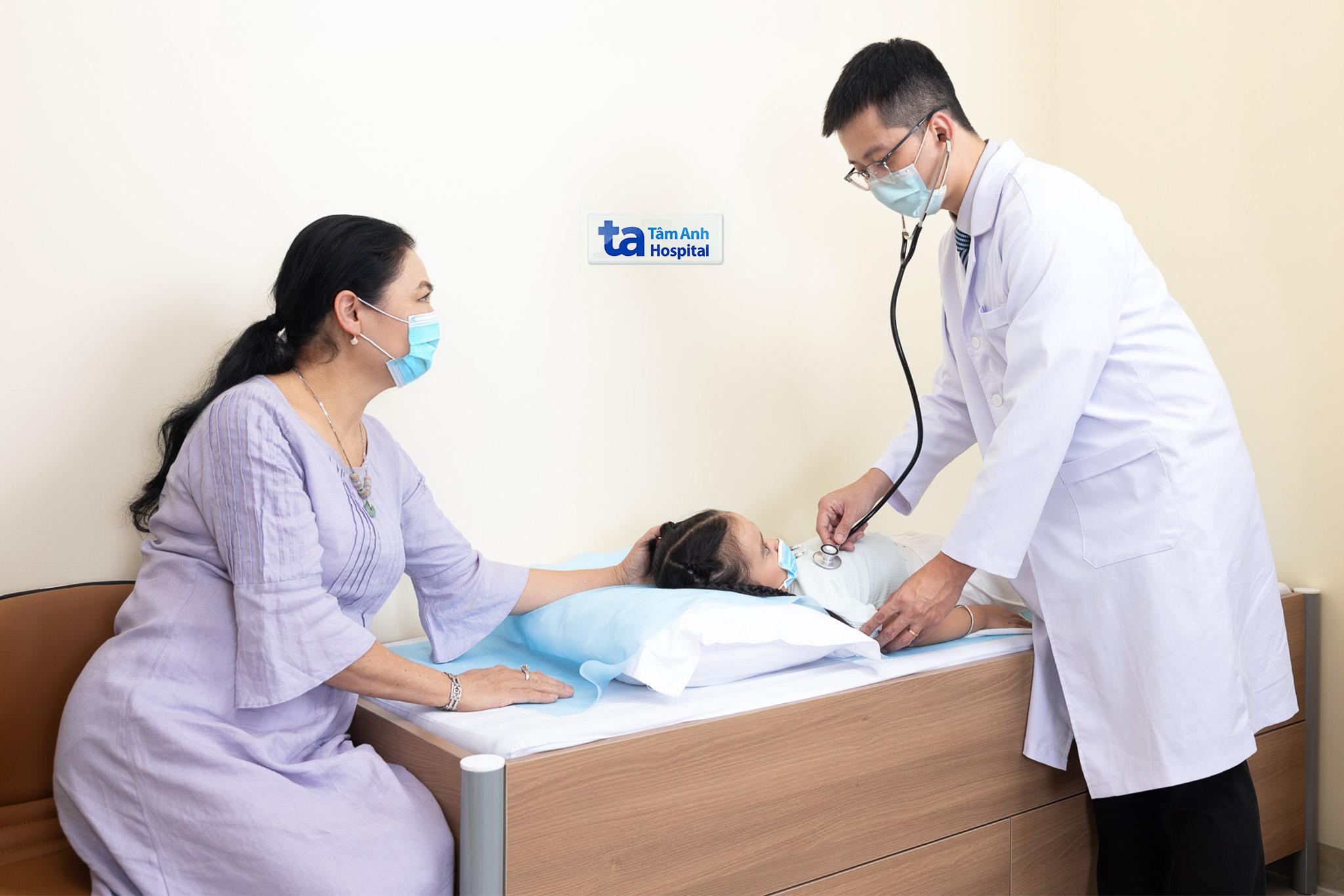Hang began showing signs of puberty at age 7, such as acne and body odor, but her family attributed these to her active lifestyle. When her height increased unusually over the past six months, they took her to Tam Anh General Clinic in District 7. Dr. Hap Tien Loc, a pediatrician, diagnosed her with precocious puberty.
Precocious puberty is the appearance of physical characteristics and hormonal changes of puberty earlier than normal. In girls, this occurs before age 8, and in boys, before age 9. Signs in girls include breast development, hair growth, menstruation, rapid height increase, acne, and body odor changes. In boys, signs include testicular and penile enlargement, underarm and facial hair growth, voice changes, rapid height increase, muscle development, acne, and body odor.
Dr. Loc explained that Hang’s breast development was due to the effects of estrogen, and her body odor was due to increased sweat gland activity influenced by sex hormones. Her 8 cm growth spurt in six months is typical of peak growth during puberty.
"The average height increase for an 8-year-old girl is about 5-6 cm per year. An increase of over 1 cm per month is abnormal," Dr. Loc said, adding that Hang's blood test showed an LH (luteinizing hormone) level of 1.8 IU/L (normal is below 0.3 IU/L). LH tests assess reproductive function in both males and females, diagnosing conditions related to the ovaries, testicles, pituitary gland, or hypothalamus. Hang has central precocious puberty, originating in the brain. Her hypothalamus and pituitary gland are sending premature puberty signals to her reproductive organs. Her uterus is developing abnormally due to elevated estrogen levels in preparation for menstruation.
An X-ray revealed that Hang's bone age is 3 years older than her actual age, around 11 years old. Precocious puberty causes the growth plates in bones to harden prematurely, potentially stunting adult height despite the current growth spurt.
Hang is receiving medication to suppress precocious puberty. This medication stops the pituitary gland from releasing LH and FSH (follicle-stimulating hormone). Without these signals, the ovaries stop producing estrogen, slowing the development of secondary sexual characteristics and bone maturation, bringing her growth rate closer to normal for her age.
This condition requires long-term treatment. For the first six months, Hang will receive monthly injections to ensure her body responds well to the medication and the dosage is appropriate. After that, she will receive injections every three months until she is 11, allowing puberty to occur naturally. She also needs regular check-ups to monitor her growth rate and bone age.
 |
Dr. Loc examines a young patient. Photo illustration: Tam Anh General Clinic District 7 |
There are two main types of precocious puberty with different causes. According to Dr. Loc, central precocious puberty, originating in the brain like Hang's case, is the most common. In most girls, no specific cause is found (idiopathic). Some cases may be due to brain issues like tumors, trauma, infections, or congenital abnormalities.
Peripheral precocious puberty occurs when the gonads (ovaries or testicles) or adrenal glands produce sex hormones abnormally. This can be caused by ovarian cysts, testicular or adrenal tumors, or exposure to external hormones from sources like cosmetics or chemicals.
Doctors assess puberty signs, conduct blood tests to measure sex hormone levels like LH and FSH, perform bone age X-rays, and use ultrasounds or MRIs to determine the cause. Children showing signs of precocious puberty should receive prompt medical attention. For central precocious puberty, medication helps children reach their maximum adult height and reduces psychological stress. For peripheral precocious puberty, treatment focuses on addressing the root cause, such as surgically removing tumors or cysts.
Dinh Lam
*The patient's name has been changed.
| Readers can submit questions about children's health here for doctors to answer. |












